Stanley Village -
Part 3 - Post Graduates
w/e 24 September 2006
All
this week's pictures were taken with a Kodak DX6490

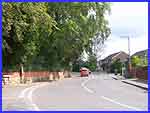 In
the second part of our monthly series covering Stanley we left
the main route through the village to explore Morley Lane and
the area known as Klondyke before returning to the road junction
at the White Hart pub. This is also where Derby Road changes
to Station Road and Station Road will form the backbone of the
rest of our journey through the village. But before we move along
that route there are still one or two points of interest that
we need to investigate in this vicinity. We'll begin by retracing
our steps into Morley Lane for a few yards and then continue
to the War Memorial and the Primary School. In
the second part of our monthly series covering Stanley we left
the main route through the village to explore Morley Lane and
the area known as Klondyke before returning to the road junction
at the White Hart pub. This is also where Derby Road changes
to Station Road and Station Road will form the backbone of the
rest of our journey through the village. But before we move along
that route there are still one or two points of interest that
we need to investigate in this vicinity. We'll begin by retracing
our steps into Morley Lane for a few yards and then continue
to the War Memorial and the Primary School.
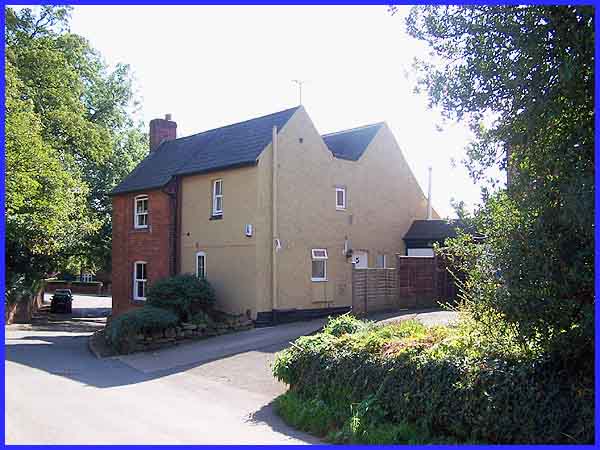
The reason for retracing our steps into Morley Lane is to see
these properties. Sandwiched between the Methodist Chapel to
the right of the picture above, and the White Hart are a number
of cottages and it was at number five Morley Lane that the original
Post Office was located.
|
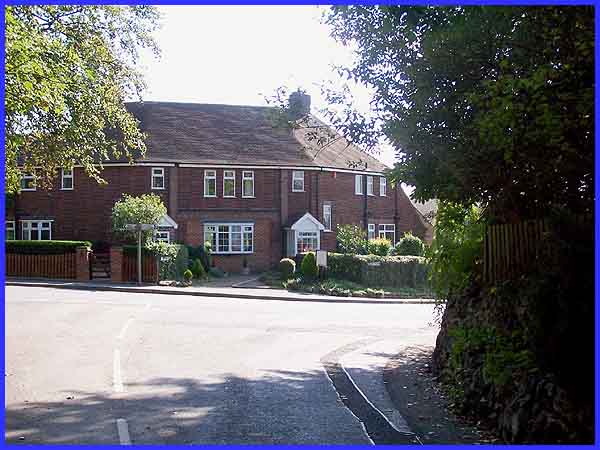
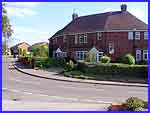 Backtracking
to the road junction we see directly in front a property that
was opened in 1934 as a purpose-built Post Office. It continued
serving the village as such until it was converted into a house
in 1979/80. Right from Victorian times until the time of this
conversion, the Post Office in Stanley had been run by members
of the Outram family. The small image right shows the same building
as seen from the car park of the White Hart but in the image
above it is still possible to make out the original shop frontage
before it was bricked up and replaced with the bay window during
the conversion. Backtracking
to the road junction we see directly in front a property that
was opened in 1934 as a purpose-built Post Office. It continued
serving the village as such until it was converted into a house
in 1979/80. Right from Victorian times until the time of this
conversion, the Post Office in Stanley had been run by members
of the Outram family. The small image right shows the same building
as seen from the car park of the White Hart but in the image
above it is still possible to make out the original shop frontage
before it was bricked up and replaced with the bay window during
the conversion.
|
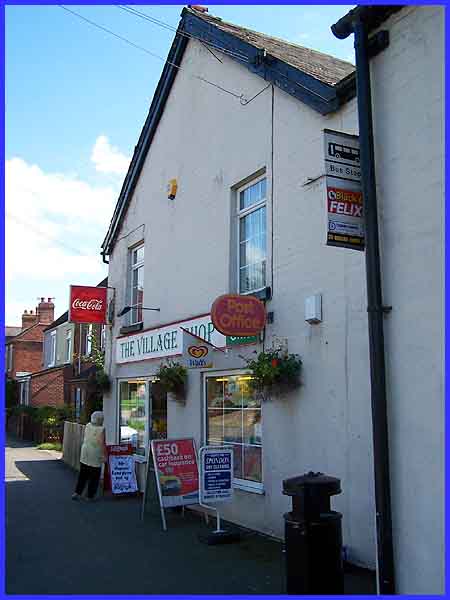
This image is really out of sequence in the walk as we will not
reach this part of Station Road until Part 5 of the series but
I've included it here in the interests of continuity as it shows
the present Post Office which is housed in The Village Shop.
With the onset of out-of-town retail parks and supermarkets everywhere
it is good to see traditional values perpetuated in places such
as this. With the current thinking though with regard to postal
services and the closing of Post Offices, one is forced to wonder
how long they can continue. Thankfully the village shop (or should
that be The Village Shop) in Stanley appears to be flourishing.
|

After that slight diversion we rejoin our exploration of the
village at the War Memorial but the postal service surely played
a part here in both World Wars, delivering those dreaded telegrams
to inform the families of the loss of those names listed here.
A plaque on the monument lists those from the village who perished
between 1939 and 1945. These include an Able Seaman in the Navy,
and two Privates and a Lance-Sergeant in the Army.
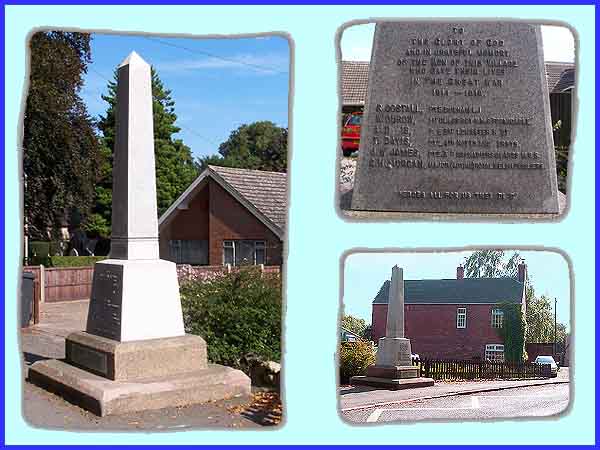
The concrete base of the War Memorial was gifted by the Mapperley
Colliery Company of which we shall learn more in a later part
of this series but the engravings on the monument also show that
six men from the village made the ultimate sacrifice in the First
World War - four Privates in various Regiments, an Acting Major
in the Royal Welsh Fusiliers and a 1st Class Boy on HMS Formidable.
As time passes knowledge of the people behind the names and the
lives they led will fade from memory but as it says on the memorial
"Heroes All For Us They Died". It is more than likely
that some if not all of those men once attended and, to borrow
an American term, graduated from the village school which lies
behind the property seen in the bottom right view above.
|
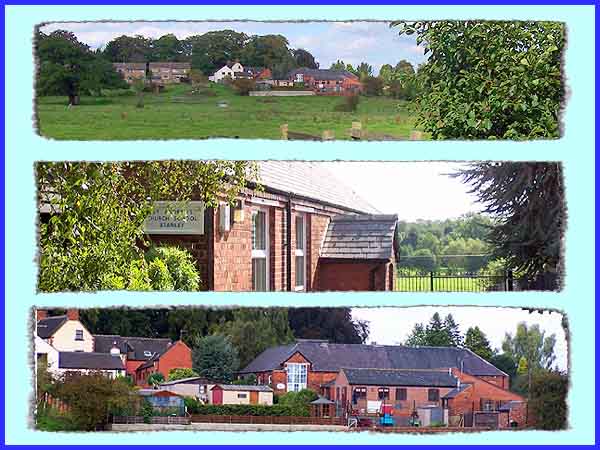
It is difficult to get a good view from near the War Memorial
today of the St. Andrew's Church of England Primary School -
see middle image of triptych above - so I cheated by returning
to Dale Road which was featured in Part 1 of the series. From
there on a footpath that leads over Stanley Brook and across
the fields I was able to get the other two images of the school
which opened in 1882 on land given by William Drury Lowe of Locko Park.
The school was extended several times prior to the First World
War to cope with the children of the population that was rapidly
expanding in the village.
|

From the school today it is possible to look across the valley
to the hillside opposite although the view will be much clearer
when the leaves have fallen off the trees. Although no bombs
fell on 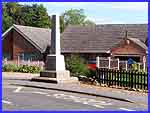 the village during
the Second World War, children (and adults too) looking that
way on Sunday July 12th 1942 might have seen an experimental
aircraft en route from Boscombe Down to Blackpool disintegrate
and fall to the ground near Quarry Farm, killing all six occupants
of the plane. This view of the farmland above was also taken
from a footpath off Dale Road. the village during
the Second World War, children (and adults too) looking that
way on Sunday July 12th 1942 might have seen an experimental
aircraft en route from Boscombe Down to Blackpool disintegrate
and fall to the ground near Quarry Farm, killing all six occupants
of the plane. This view of the farmland above was also taken
from a footpath off Dale Road.
In the next part we'll start at Stanley Church which is a little
to the left of the War Memorial about as far as the school is
to the right.
|

